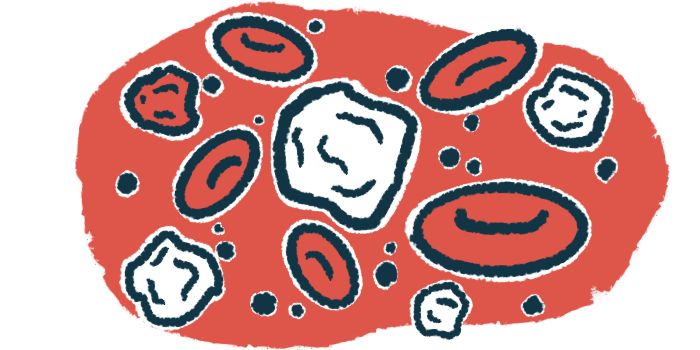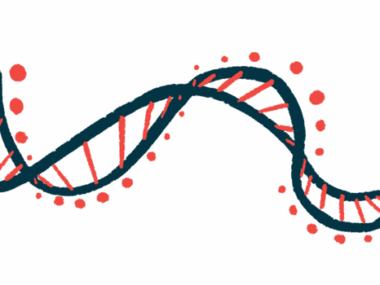Problems with regulatory T-cells drive Sjögren’s, study suggests
Tregs work to dampen immune responses, possible treatment noted
Written by |

Problems with regulatory T-cells, or Tregs — a type of immune cell that plays a key role in dampening the body’s immune responses — drives the development of Sjögren’s disease, according to a recent mouse study.
Treg dysfunction, also demonstrated by the genetic signatures in immune cells isolated from Sjögren’s patients, was associated with the inflammatory signaling protein interferon-gamma. Blocking the action of this protein with baricitinib, a medication sold under the brand name Olumiant and used to treat rheumatoid arthritis and other diseases, alleviated Sjögren’s signs in mice.
“Not only did we dissect the underlying cause for Sjögren’s disease in our mouse model, but we correlated these findings to the disease’s classification criteria and genetic signatures in humans,” Stefan Feske, MD, the study’s lead author and a professor of medicine at New York University (NYU) Grossman School of Medicine, said in a university news story.
“Moreover, I think using baricitinib has great promise in the treatment of Sjögren’s disease going forward,” Feske said.
Study into root causes of Sjögren’s, an inflammation-driven disease
The study, “IFN-[gamma]–producing TH1 cells and dysfunctional regulatory T cells contribute to the pathogenesis of Sjögren’s disease,” was published in Science Translational Medicine.
Sjögren’s disease results from immune system inflammatory attacks against healthy cells, mainly in the glands that produce saliva and tears. Hallmark disease symptoms are dry mouth and eyes, but they can also include fatigue, joint and muscle pain, rashes, and lung inflammation.
“Not being able to produce tears or saliva can have a great impact on one’s life,” said Rodrigo Lacruz, PhD, a study author and professor of molecular pathobiology at NYU College of Dentistry. “If you can’t produce saliva, it may hamper your speech and your ability to process food, increases your risk for developing cavities, and overall worsens one’s health.”
In addition to low tear and saliva production, the disease is marked by the presence of self-reactive antibodies, called autoantibodies, in the bloodstream, and the influx of activated immune T-cells and B-cells into the affected glands.
“Sjögren’s disease is an inflammation-driven disease,” Feske said. “There are therapies for Sjögren’s that deplete B cells with antibodies, but they showed mixed results in clinical trials.”
While research demonstrates that saliva generation depends on calcium signaling, it’s unclear to what extent it may be involved in Sjögren’s development.
Deleting genes in Tregs involved in saliva production affected the cells
In a previous study led by Lacruz, researchers deleted two genes, Stim1 and Stim2, involved in calcium-related saliva production from mice’s salivary glands. These genes encode proteins that act as calcium sensors, which in turn control the activation and function of ORAI1, a protein channel through which calcium ions flow into cells.
Although these mice produced less saliva, they didn’t have the salivary gland inflammation or increased levels of autoantibodies that are typically seen in Sjögren’s. These findings suggested that the loss of calcium signaling in salivary gland cells might suppress inflammatory responses rather than make mice susceptible to inflammation and autoantibodies.
“We found that a specialized calcium channel activated by STIM1 and STIM2 proteins, the ORAI1 channel, is essential for driving saliva secretion, which is an important discovery,” Lacruz said. “Lack of calcium signals not only impairs function, it may also decrease the effect of inflammatory molecules that have been associated with Sjögren’s disease.”
Earlier studies in mice suggest that calcium signaling impairments in immune T-cells can lead to Treg dysfunction, which promotes inflammation and autoimmune disease.
In this study, the team assessed the effects of selectively deleting the Stim1 and Stim2 genes in the mice’s Tregs.
Without these genes, Tregs were dysfunctional, causing mice to develop severe inflammation, which aligned with signs of Sjögren’s: dry eyes, dry mouth, autoantibodies in the blood, and immune cell influx into the salivary and tear glands. Some mice also developed lung inflammation.
“Knocking out these two genes drove a cascade of immune dysfunction,” Feske said.
Rheumatoid arthritis medication eased inflammation in mice
Using blood cells from mice and humans, the team confirmed that Treg dysfunction drove Sjögren’s, which could occur through different pathways, not just calcium signaling.
Moreover, without the dampening effect of Tregs, other T-cells known as T helper 1 (Th1) cells, which released the inflammatory signaling molecule interferon-gamma, became dominant in the animals.
“It came down to a defect in regulatory T cells and an overactivation of the cells that produce an inflammatory cytokine called interferon gamma,” Feske said. “Interferon gamma was absolutely critical for causing dysfunction of salivary glands in our mouse model.”
Researchers then tested the impact of inhibiting interferon signaling by treating the mice with baricitinib. Use of this medication alleviated Th1 cell-induced salivary gland dysfunction and inflammation in mice.
Finally, to determine if these findings could translate to patients, researchers conducted a gene activity analysis of white blood cells isolated from people with Sjögren’s disease. The results consistently showed that immune cells from patients had enhanced Th1 cell activity but reduced Treg function.
“Our study provides evidence for a critical role of dysfunctional Treg cells and [interferon gamma]-producing Th1 cells in the [development] of [Sjögren’s disease],” the scientists wrote.






